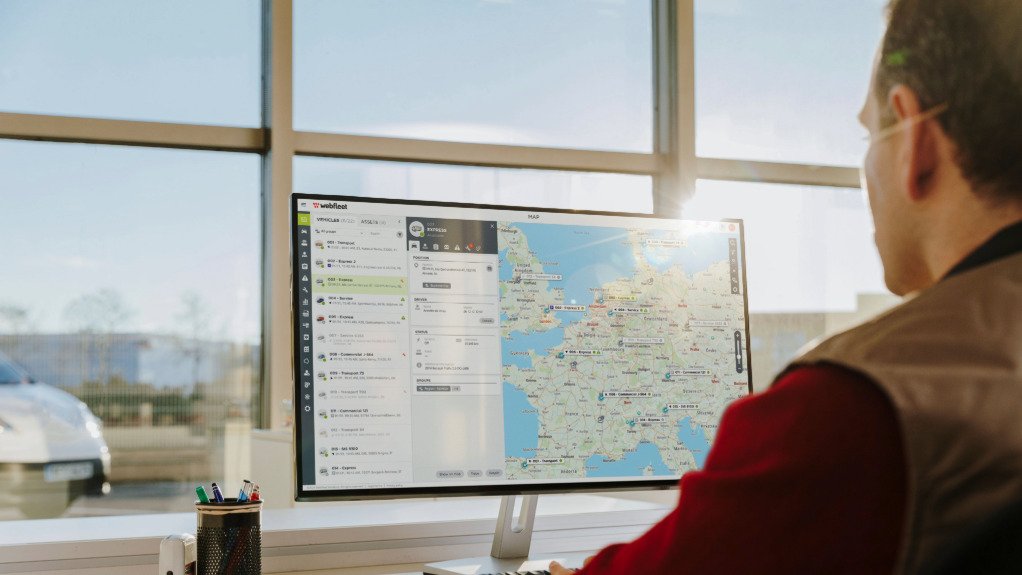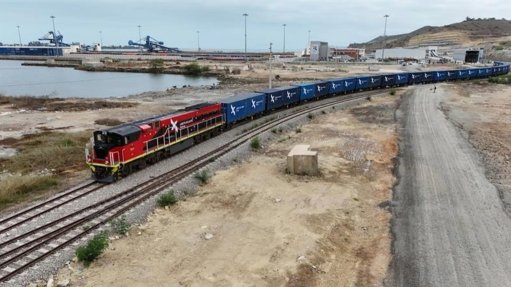Short-haul logistics should lead EV adoption


ENHANCED CONTROL Companies can use telematics systems to monitor and manage their fleet's power use
Electric vehicles (EVs) are a viable option for fleets, particularly in the short-haul deliveries sector, and these fleets are likely to drive the adoption of EVs in South Africa, says telematics solutions provider Webfleet sales director Justin Manson.
Short-haul deliveries specialise in local or regional deliveries; therefore, the benefits of EVs are more easily accessible, most notably the lower long-term running costs, compared to those of long-haul logistics.
Vehicles used over shorter distances, such as 300 km to 400 km a day, usually start from depots or distribution centres to deliver products, and then return to depots. These vehicles can charge their batteries at depots and distribution centres during periods when they are not in use.
Charging can occur at night or during off periods to ensure that the vehicles can function without having to stop to charge throughout the journey, Manson explains.
Further, through integrating reliable telematics systems, companies can monitor and manage the vehicles’ power use while in transit, determine the range that they can cover using their current battery levels and determine when vehicles will need to return to the depot to charge again.
This eliminates the need to charge at external charging stations, enabling a company to have complete control of the entire charging process. Charging stations at depots or distribution centres can be powered by solar power and inverters to reduce reliance on the grid.
“We work with one or two companies which started out doing charging station installations, and while they are still doing that, they have started to charge their vehicles at company distribution centres, where they have solar power installations,” Manson says.
Government Incentives
During his State of the Nation Address in February, President Cyril Ramaphosa announced government’s commitment to transitioning towards EVs and more sustainable, greener power generation and alternative power sources. To drive this transition, various incentives have been announced.
A key incentive aimed at the automotive manufacturing sector is that, from March 2026, manufacturers of EVs and hydrogen vehicles can claim up to 150% of “qualifying investment spending” in the first year of production. Additionally, the National Treasury has allocated R964-million to support the transition to EVs, supplementing the incentive scheme.
However, Manson notes a significant challenge for the EV manufacturing industry is the absence of a detailed framework specifying how the 150% rebate will be structured, despite the rough timeline being provided. This framework is crucial for providing the guidance and stability needed to initiate the process of manufacturing EVs.
Manson also highlights the significant cost and timelines associated with transitioning from manufacturing internal combustion engines (ICEs) to EVs, particularly the costs related to changing production lines, processes and machinery. Without a clear framework, manufacturers are unlikely to make these changes.
An additional hurdle is South Africa’s ports, as backlogs at the ports result in significant delays which hamper the importing of equipment and components required for manufacturing and, eventually, hinders exporting of locally manufactured vehicles.
Other challenges, such as unstable power supply, continue to impact on the manufacturing industry and can become a deterrent when evaluating the viability of increasing production.
Manson
questions whether the costs associated with integrating equipment to facilitate EV manufacturing are worth the investment if manufacturers will have to continue battling the current challenges affecting the manufacturing sector.
Therefore, Manson calls on government to resolve existing problems, in addition to incentivising the manufacturing and adoption of EVs to allow for growth in EV manufacturing.
Job Creation
A significant driver of EV adoption is its anticipated role in the energy transition, along with moving towards increased sustainability, particularly as EVs are viewed as an avenue to decrease CO2 emissions associated with ICE vehicles.
However, in South Africa, Manson says job creation associated with increased EV adoption is an equally important consideration. The industry has the potential to generate many benefits for the country including increased job creation, he says.
The largest increase in job creation is expected in second-tier industries, owing to more charging stations having to be installed, as well as an increase in solar installations to power those charging stations during unstable power supply periods.
In the longer term, increased EV adoption could drive more manufacturing and service-related jobs, such as technicians or mechanics, to maintain, service and repair EVs.
Manson acknowledges that the local industry is facing significant challenges, resulting in automotive manufacturer Opel’s withdrawal from the country, as well as major manufacturers expressing concerns about the industry’s viability.
However, he asserts that the automotive industry remains vital, owing to its substantial employment impact, including on downstream industries.
To ensure the industry’s longevity, government and industry must collaborate to address the issues to maintain the automotive sector’s contribution to the economy, Manson concludes.
Article Enquiry
Email Article
Save Article
Feedback
To advertise email advertising@creamermedia.co.za or click here
Comments
Press Office
Announcements
What's On
Subscribe to improve your user experience...
Option 1 (equivalent of R125 a month):
Receive a weekly copy of Creamer Media's Engineering News & Mining Weekly magazine
(print copy for those in South Africa and e-magazine for those outside of South Africa)
Receive daily email newsletters
Access to full search results
Access archive of magazine back copies
Access to Projects in Progress
Access to ONE Research Report of your choice in PDF format
Option 2 (equivalent of R375 a month):
All benefits from Option 1
PLUS
Access to Creamer Media's Research Channel Africa for ALL Research Reports, in PDF format, on various industrial and mining sectors
including Electricity; Water; Energy Transition; Hydrogen; Roads, Rail and Ports; Coal; Gold; Platinum; Battery Metals; etc.
Already a subscriber?
Forgotten your password?
Receive weekly copy of Creamer Media's Engineering News & Mining Weekly magazine (print copy for those in South Africa and e-magazine for those outside of South Africa)
➕
Recieve daily email newsletters
➕
Access to full search results
➕
Access archive of magazine back copies
➕
Access to Projects in Progress
➕
Access to ONE Research Report of your choice in PDF format
RESEARCH CHANNEL AFRICA
R4500 (equivalent of R375 a month)
SUBSCRIBEAll benefits from Option 1
➕
Access to Creamer Media's Research Channel Africa for ALL Research Reports on various industrial and mining sectors, in PDF format, including on:
Electricity
➕
Water
➕
Energy Transition
➕
Hydrogen
➕
Roads, Rail and Ports
➕
Coal
➕
Gold
➕
Platinum
➕
Battery Metals
➕
etc.
Receive all benefits from Option 1 or Option 2 delivered to numerous people at your company
➕
Multiple User names and Passwords for simultaneous log-ins
➕
Intranet integration access to all in your organisation

















